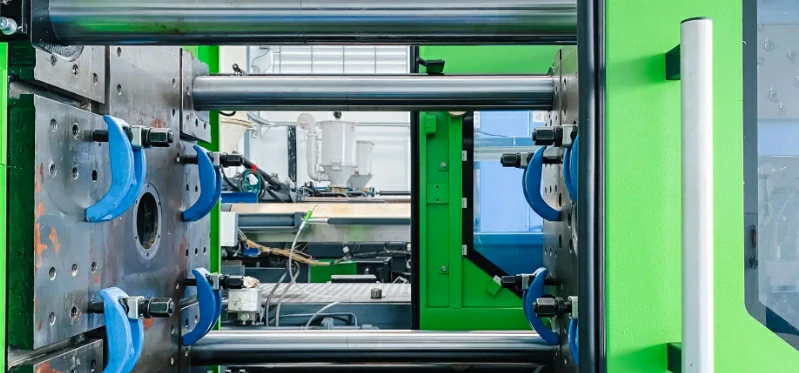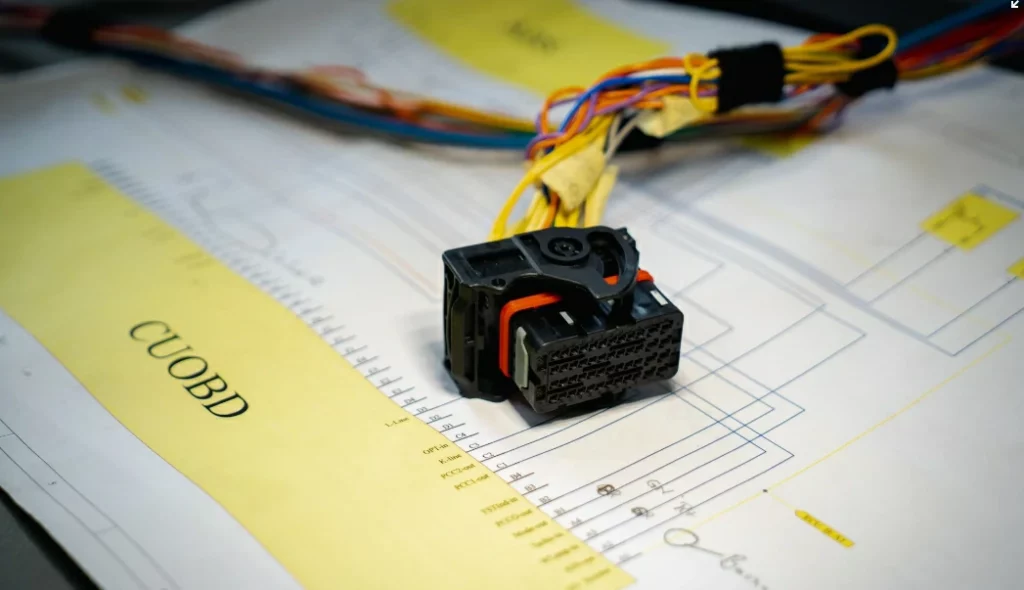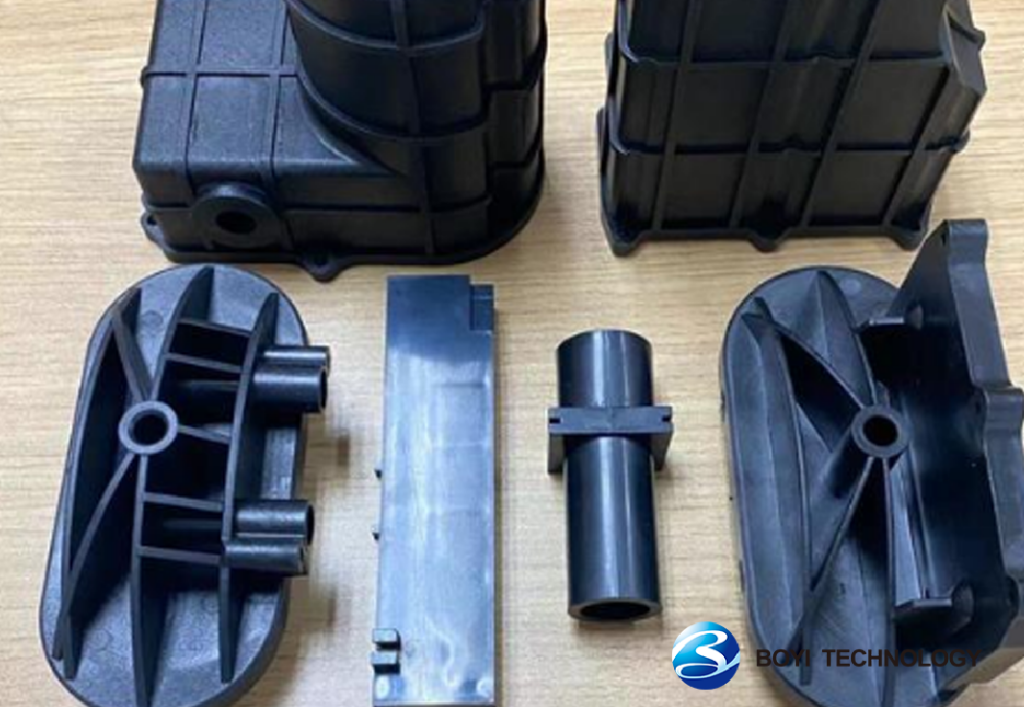Injection molding process for connectors is one of the crucial manufacturing processes. Connectors, widely employed electronic components, play a pivotal role in bridging electrical signals and power in circuits.
The connector injection molding process involves the utilization of injection molding machines and molds. It is an indispensable technique for producing high-quality connectors. This article will elaborate on the principles and procedures of the connector injection molding process.
What is injection molding?

Injection molding technology is a plastic processing method widely used in industries such as automotive, electronics, and medical equipment. Its basic principle involves heating plastic pellets or powder to a molten state and then injecting them into a mold under high pressure. After cooling and solidification, the molded product is obtained.
Injection molding offers advantages such as fast production speed, high efficiency, automated operation, a wide variety of colors and types, and flexible shapes and sizes. It can produce complex-shaped parts and is suitable for mass production.
Why choose injection molding for connector manufacturing?
The material selection of connector components used in the electronics industry is based on strict requirements. The injection molding process helps to meet these requirements. There are several important reasons why you need to choose injection molding for connector manufacturing:
1.Efficient mass production
Injection molding technology offers a high level of automation, enabling continuous production and thus enhancing production efficiency. When manufacturing connectors, injection molding machines can swiftly perform operations such as mold opening and closing, injection molding, and demolding, significantly reducing production cycles. By optimizing mold design and production processes, waste rates can be minimized, leading to lower production costs.
2.Diverse shapes and specifications
Connectors typically exhibit intricate geometries, including fine pins and delicate structures. Injection molding technology allows for precise molding of connector components. Advanced injection mold design and precise molding processes yield connector components with precise shapes and consistent dimensions, while maintaining high levels of accuracy and uniformity.
3.Material adaptability
Connectors often require excellent conductivity, high temperature resistance, and corrosion resistance. Injection molding offers the flexibility to select various types of plastic materials to meet diverse engineering requirements. Additionally, injection molding enables the combination of multiple materials, enhancing the comprehensive performance of connectors.
4.Environmental sustainability
With the increasing emphasis on environmental awareness, more companies are focusing on the environmental sustainability of production processes. Injection molding, as an environmentally friendly and sustainable manufacturing method, reduces resource consumption and environmental pollution, aligning with the requirements of sustainable development.

The principle of connector injection molding
The principle of injection molding for connectors involves using an injection molding machine to extrude molten plastic material at high temperatures, injecting it into a mold to form holes equivalent to the recesses in the mold. As pressure is applied to the injection molding machine’s nozzle, the plastic material is cooled and solidified, forming components with specific shapes and dimensions. After removing the mold and performing finishing processes, connector products are obtained.
The process flow for connector injection molding is as follows:
- Mold Design: The mold is the core of the connector injection molding process. Mold design must consider factors such as part size, shape, structure, thickness, injection direction, ejection method, and coordination with the injection molding machine’s manipulator. Based on these factors, a mold design scheme is formulated and manufactured.
- Material Selection: Connector materials are mainly environmentally friendly plastics such as PA, PE, PP, PC, etc., which have good physical and chemical properties suitable for the injection molding process. Materials are typically selected by connector manufacturers, considering factors such as environmental conditions, corrosion resistance, and reusability.
- Prototyping: Prototyping involves making molds and injecting samples that meet the design requirements of connector products. Prototyping is a critical step in the process, requiring precise control of injection molding machine parameters such as temperature, injection pressure, speed, etc. Samples are tested and evaluated to achieve the desired molding results.
- Production: Based on sample quality and customer requirements, connector product production batches are confirmed, and mass production begins. During production, it’s essential to continuously monitor and optimize process parameters to ensure the manufacturing quality and reliability of connector products.
Injection molding materials for connectors
The materials used in connector injection molding usually require certain physical and chemical properties to meet the working requirements of connectors in various environments. The commonly used materials for connector injection molding include but are not limited to:
1.ABS
ABS is an engineering plastic known for its excellent heat resistance, cold resistance, impact resistance, processability, and surface gloss. Due to its outstanding overall performance, ABS material is widely used in the injection molding of electronic connectors.
2.PBT
PBT is a polyester resin with excellent mechanical properties, electrical properties, and corrosion resistance. In the fields of electronic communication and electrical appliances, PBT injection molded products have been widely applied.
3.PC
PC material possesses excellent optical properties, heat resistance, and mechanical strength. It is extensively used in connector products requiring high transparency and impact resistance.
4.POM
POM has a low friction coefficient and excellent dimensional stability, making it particularly suitable for producing connector components that demand high precision and low friction, such as gears and bearings.
Additionally, plastics such as nylon (PA) and polystyrene (PS) are also commonly used in connector injection molding. The selection of these materials depends on specific connector design requirements, including mechanical performance, electrical properties, environmental adaptability, and cost considerations.
Boyi provides efficient injection molding services to create excellent connector products
As a connector design professional, you need efficient manufacturing solutions. Boyi provides you with fast and reliable injection molding services to help you turn your designs into reality. We have injection molding services certified boyi ISO 13485 and ISO 9001:2015, suitable for precision prototyping and small batch production of connectors. Whether you need large-scale injection molding, complex 3D printing designs, or CNC machining of precision parts, our experienced engineering team can provide you with the best manufacturing solutions. Choose Boyi now to inject reliable quality into your connector products!
Put your parts into production today
All uploads are secure and confidential.
Conclusion
In conclusion, injection molding is a highly versatile and efficient process for manufacturing connectors, catering to diverse applications across industries where reliable electrical connections are paramount.



